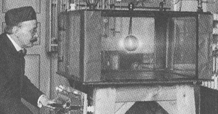|
The term "aurora borealis" was used in 1621 by the French scientist and philosopher Pierre Gassendi, but George Siscoe has given reasons to believe it was introduced by Galileo Galilei in 1619 (p. 51 in "Majestic Lights", cited below). Elias Loomis of Yale University compiled, in 1860, a map marking how many times in an average year were auroras observed in various locations (click here to see his map). A more accurate map was compiled in 1881 by Hermann Fritz (1830-1883) (click here to see Fritz'es map).
| 
|

 Official GSFC Home Page
Official GSFC Home Page  NASA WWW Home Page
NASA WWW Home Page